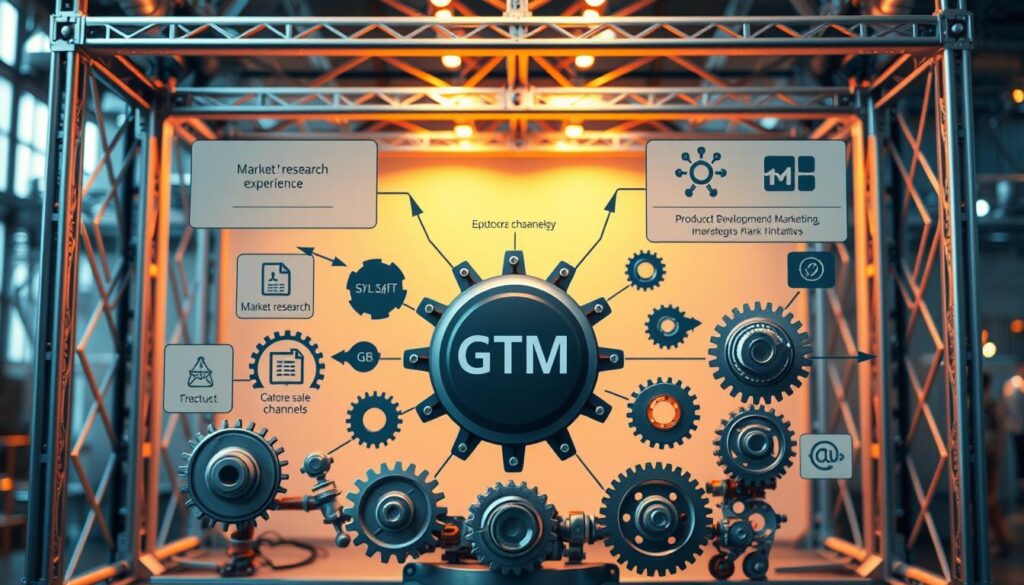In today’s competitive landscape, product innovation alone no longer guarantees success. Businesses now compete on emotional engagement and meaningful interactions that shape how audiences perceive their brand. A recent study by TARP Worldwide reveals that 90% of dissatisfied clients leave silently, while 100% share negative feedback with at least nine others. This underscores a critical truth: lasting growth depends on how companies make customers feel.
Imrose Kumar of GE Aerospace defines this dynamic as “everything an organization does for its audience and the emotions it cultivates.” Forward-thinking teams now prioritize strategic alignment between brand actions and client expectations. They build frameworks that anticipate needs, resolve friction points early, and deliver solutions aligned with audience values.
Research shows organizations excelling in this area achieve 3x higher stock performance than peers. Those lagging risk silent client attrition and reputational erosion. This guide offers actionable methods to reimagine market entry plans through client-centric design, blending analytical rigor with human-centered insights.
Key Takeaways
- Emotional engagement drives brand loyalty more than product features alone
- Unresolved dissatisfaction leads to silent client loss and amplified negative feedback
- Proactive experience design improves financial performance and market resilience
- Strategic alignment bridges organizational actions with audience expectations
- Frameworks blending data and empathy create sustainable competitive advantages
Introduction to Go-To-Market Customer Experience
Business success now hinges on delivering memorable interactions that extend beyond transactional relationships. Delta Airlines exemplifies this shift – their CEO recently declared, “We’re no longer an airline, but an experience provider.” This mindset drives measurable results: firms prioritizing client-centric approaches see 1.7x faster revenue growth than competitors.
The Silent Power of Trusted Voices
Traditional advertising struggles against peer recommendations. Studies reveal 88% of consumers trust friends’ opinions over branded messages. Exceptional interactions become growth engines – satisfied clients share positive stories, reducing acquisition costs by 31% on average.
Strategic Alignment in Action
Forward-thinking organizations embed experience design into their core strategies. When product differentiation fades, emotionally resonant engagements maintain pricing power. Tech giant SAP increased client retention by 40% after aligning its GTM strategy with audience values.
These approaches deliver compounding returns. Businesses mastering this balance achieve 23% higher profit margins while building market resilience. The key lies in treating every touchpoint as a brand-defining moment.
Understanding the Importance of Customer Experience
Organizations leading their industries understand that experiences often outweigh products in building trust. Every interaction – from website navigation to post-purchase support – shapes how individuals perceive both the brand and their own choices. Imrose Kumar’s telecom ordeal illustrates this: unclear pricing structures made him question his judgment, proving that how companies deliver value impacts self-image as much as what they sell.
Psychological research reveals a critical pattern. Positive engagements reinforce confidence in decision-making, while negative ones trigger doubt. A single confusing checkout process can erode trust built over months. These moments create ripple effects – 68% of buyers share poor experiences within 24 hours, amplifying reputational risks.
Forward-thinking teams map interactions using frameworks like this:
| Touchpoint | Confidence Builder | Trust Eroder |
|---|---|---|
| Pricing Transparency | Clear value comparison tools | Hidden fees discovered late |
| Support Interactions | Empathetic problem-solving | Scripted, impersonal responses |
| Feedback Handling | Implemented suggestions | Generic “thank you” replies |
This approach transforms routine transactions into relationship-building opportunities. Brands excelling in experience design see 4x higher referral rates than competitors. They recognize that meeting needs requires understanding unspoken emotional drivers – the desire for competence, autonomy, and respect.
Ultimately, memorable interactions create competitive advantages that price cuts can’t match. When customers feel understood rather than processed, they become voluntary ambassadors. This emotional equity outlasts product cycles and market shifts.
Defining Your “go to market customer experience”
Successful product launches now demand more than feature checklists. Leading organizations structure their approach around audience-first principles that align business objectives with buyer priorities. This strategic alignment transforms standard rollouts into relationship-building opportunities.

Essential Elements for Impactful Execution
Effective frameworks combine analytical rigor with operational flexibility. As SAP’s Chief Strategy Officer notes: “Our best-performing launches occur when engineering teams collaborate directly with client advisory panels during development.”
Critical components include:
| Component | Core Function | Implementation Tip |
|---|---|---|
| Journey Mapping | Visualizes interaction points | Incorporate emotional triggers at key stages |
| Feedback Integration | Captures real-time insights | Use quarterly pulse surveys |
| Cross-Team Alignment | Breaks operational silos | Create shared success metrics |
Organizations achieve 27% faster adoption rates when using these methods. The secret lies in balancing strategic vision with tactical adaptability. Teams must evolve their plans as audience needs shift.
Best-in-class approaches treat product launches as continuous conversations. They establish feedback loops that inform pricing adjustments, support enhancements, and future development cycles. This dynamic model creates lasting competitive advantages in crowded markets.
Mapping the Customer Journey: Strategies and Stages
Modern enterprises increasingly recognize journey mapping as a strategic compass for navigating complex buyer relationships. GE Aerospace’s Imrose Kumar advocates a three-step process: visualizing interactions, analyzing emotional triggers, and aligning resources to meet evolving expectations.
Identifying Critical Journey Phases
B2B journeys unfold through five pivotal stages: awareness, selection/purchase, delivery, use, and renewal. Each phase demands specific strategies:
- Awareness: Content must address unrecognized needs while establishing thought leadership
- Selection: Comparison tools and case studies reduce decision paralysis
- Renewal: Proactive check-ins demonstrate ongoing commitment beyond contracts
Touchpoint Analysis and Customer Interactions
Every email, product demo, and support call shapes perceptions. Leading organizations document interactions using matrices that track:
| Channel | Opportunity | Risk Factor |
|---|---|---|
| Digital Ads | Educate about hidden pain points | Overpromising capabilities |
| Product Trials | Showcase ease of adoption | Complex onboarding processes |
| Quarterly Reviews | Identify upsell opportunities | Generic talking points |
Teams using this approach achieve 38% faster issue resolution and 19% higher renewal rates. The key lies in treating each touchpoint as a relationship-building moment rather than transactional checkpoint.
Gathering and Analyzing Customer Feedback
Understanding customer sentiment requires peeling back layers of both visible interactions and hidden processes. Teams that master this dual approach uncover insights driving 42% faster operational improvements, according to McKinsey research.
Frontstage vs. Backstage Insights
Frontstage feedback captures direct perspectives through open-ended questions and observational studies. A retail bank discovered 68% of account holders valued personalized service more than digital features – insights only revealed through face-to-face interviews.
Backstage analysis examines systemic roots of surface issues. When clients complained about slow onboarding, one fintech firm traced delays to legacy systems requiring 14 manual approvals. Fixing these hidden bottlenecks reduced processing time by 81%.
| Method | Data Source | Impact |
|---|---|---|
| Frontstage | Surveys, user testing | Identifies emotional drivers |
| Backstage | Workflow audits, system logs | Reveals operational gaps |
Combining both approaches creates actionable intelligence. Teams using mixed-method analysis resolve issues 3x faster than those relying on single data streams. The key lies in asking strategic questions that connect client perceptions with backend realities.
Effective organizations employ tools like sentiment analysis software alongside process mining platforms. This fusion of qualitative and quantitative data transforms feedback into targeted upgrades – from interface tweaks to automated approval workflows.
Identifying and Resolving Customer Pain Points
Every business interaction holds potential friction points that can derail relationships. Imrose Kumar’s telecom ordeal – where opaque billing overshadowed months of smooth service – demonstrates how single unresolved issues erase positive memories. Research confirms 72% of buyers switch providers after two negative experiences, making pain point resolution non-negotiable.

Common Challenges and How to Address Them
Pinpointing these friction areas requires cross-referencing three data streams: sentiment analysis, process maps, and support logs. Teams often discover mismatches between perceived and actual causes. For example, complaints about slow deliveries might trace to unclear tracking systems rather than logistics delays.
Frequent obstacles include:
- Role confusion creating inconsistent responses
- Multi-step approval processes delaying resolutions
- Legacy systems generating conflicting data outputs
Effective solutions combine immediate triage with systemic fixes. When a SaaS company noticed recurring onboarding struggles, they streamlined customer service operations while redesigning their knowledge base. This dual approach reduced support tickets by 57% within six months.
Proactive organizations implement quarterly “friction audits” analyzing:
| Metric | Early Warning Sign | Resolution Pathway |
|---|---|---|
| Escalation Rates | >15% repeat contacts | Process simplification |
| Sentiment Scores | Negative keyword spikes | Staff retraining |
Teams adopting this structured approach achieve 43% faster issue resolution and 29% higher retention rates. The key lies in treating pain points as opportunities to demonstrate commitment rather than mere problems to fix.
Integrating Customer Insights into Your GTM Strategy
Turning raw data into strategic fuel separates market leaders from competitors. Organizations that master this art see 23% higher conversion rates and 19% shorter sales cycles compared to peers relying on intuition alone. The process begins with converting feedback into cross-departmental action plans.
- Translating survey responses into product roadmap priorities
- Aligning marketing campaigns with uncovered emotional drivers
- Equipping sales teams with real-time objection handling insights
When a SaaS provider implemented this approach, they reduced client onboarding time by 41% while increasing upsell success rates. Their secret? Weekly syncs between support logs and development sprints.
Cross-functional alignment thrives on shared metrics. Teams using audience-focused frameworks report 35% faster decision-making. They replace siloed KPIs with unified goals like:
- Reducing recurring support tickets through feature updates
- Increasing referral rates via personalized check-ins
- Boosting renewal likelihood with proactive resource allocation
These strategies create compounding returns. Companies embedding insights into their DNA achieve 4.2x higher client lifetime value than industry averages. The result? Sustainable growth powered by genuine audience understanding.
Leveraging AI and Data for Enhanced Customer Experience
Artificial intelligence is revolutionizing how companies understand evolving audience needs. Forward-thinking teams now use machine learning to transform raw information into strategic assets – identifying high-value opportunities 83% faster than traditional methods.
The Mechanics of Intelligent Adaptation
Predictive analytics tools analyze historical patterns to forecast future behaviors. At Cognism, these systems process millions of data points daily, enabling:
- Personalized messaging tailored to individual decision timelines
- Automated alerts for at-risk accounts 45 days before churn
- Real-time content adjustments based on engagement signals
These data-driven workflows create tangible efficiencies. Marketing teams using AI-powered platforms report 37% faster campaign optimizations. Sales reps gain AI-generated talk tracks addressing specific buyer concerns, while RevOps automates 62% of manual reporting tasks.
| Tool | Function | Impact |
|---|---|---|
| Claude | SEO keyword discovery | 41% traffic increase |
| Hyperbound AI | Sales scenario modeling | 29% win rate boost |
| Custom GPTs | Process documentation | 57% faster onboarding |
The most effective strategies balance automation with human oversight. Teams maintaining this equilibrium achieve 4.3x ROI on AI investments compared to those relying solely on manual processes.
Creating Compelling Messaging and Value Proposition
In an era of information overload, clear communication cuts through the noise. Winning teams craft messaging that mirrors how audiences describe their challenges. This requires analyzing sales call transcripts, support tickets, and competitor reviews to identify authentic language patterns.
Effective value articulation transforms technical features into relatable outcomes. Instead of listing capabilities, demonstrate how solutions improve key metrics like productivity gains or risk reduction. One cybersecurity firm increased conversions by 33% by reframing encryption tools as “client trust guardians.”
Three Principles for Resonance
Prioritize content that addresses unspoken priorities. Case studies prove most impactful when showcasing measurable results aligned with buyer promotion criteria. Technical documents should translate specifications into team-level benefits.
Maintain brand consistency while adapting tone for different roles. Finance leaders respond to ROI-focused narratives, while IT teams value implementation clarity. Regular message testing with sample customers ensures relevance across decision-making layers.
This strategic approach turns generic pitches into trusted guidance. When value propositions align with core needs, organizations build credibility that outlasts individual transactions.
FAQ
How does customer experience impact go-to-market success?
Strong CX directly fuels GTM effectiveness by building trust during initial engagements. Brands like Salesforce demonstrate how seamless onboarding and personalized support reduce churn while increasing referral rates. Experience design influences 73% of purchase decisions according to PwC research.
What tools help align GTM strategy with user needs?
HubSpot’s customer journey analytics and Qualtrics XM Platform enable teams to map pain points across stages. AI-powered tools like Gong analyze sales calls to identify recurring objections, while Hotjar reveals website friction through session recordings.
When should companies address journey pain points?
Immediate prioritization occurs when feedback shows >15% drop-off at specific touchpoints. Best practice involves quarterly CX audits using tools like Medallia to detect emerging issues before they impact conversion rates.
Can predictive analytics improve launch experiences?
Yes. Adobe’s AI models forecast adoption barriers by analyzing beta user behavior, allowing preemptive adjustments. Machine learning identifies patterns in support tickets to refine onboarding flows pre-launch.
What separates effective GTM messaging from generic content?
Slack’s campaign success stemmed from addressing specific IT team anxieties about platform security. High-impact messaging ties product capabilities to measurable outcomes like “Reduce meeting prep time by 40%” rather than vague benefits.
How often should customer journey maps be updated?
Leading brands like Zendesk revise maps quarterly using real-time NPS data and salesforce interactions. Major product updates or market shifts trigger immediate revisions to maintain alignment with evolving expectations.
What metrics prove CX ROI in GTM strategies?
Track customer effort score (CES), onboarding completion rates, and feature adoption velocity. Dropbox increased conversions 22% by monitoring time-to-first-value metrics and eliminating identified friction points.



